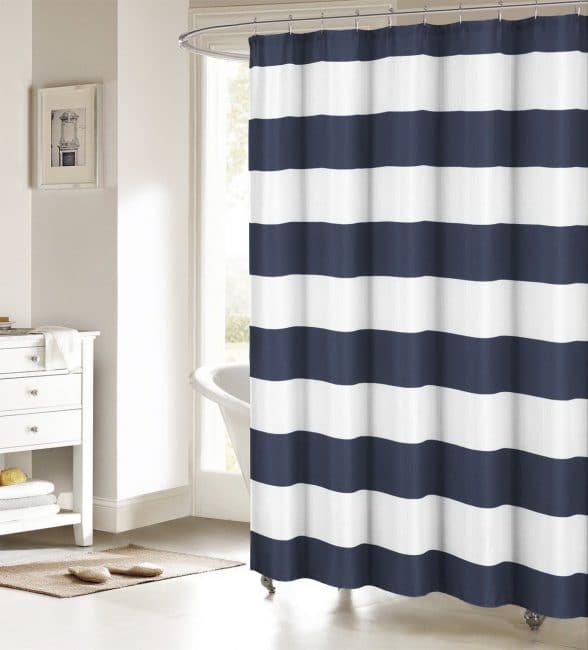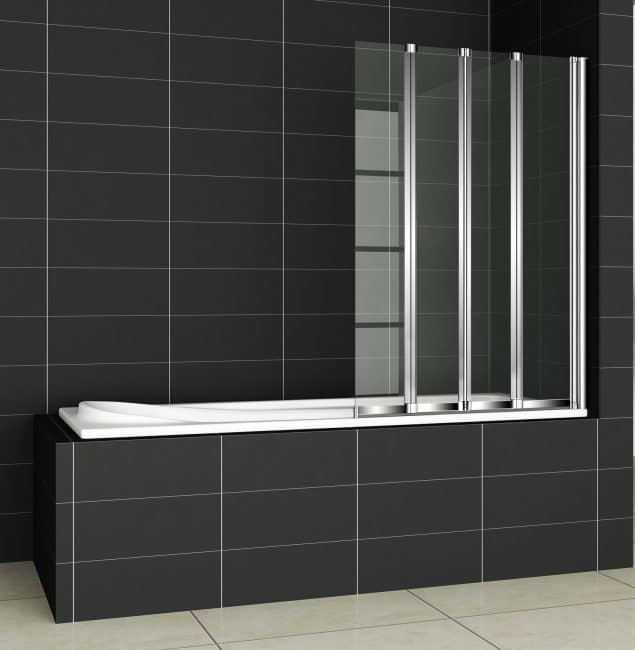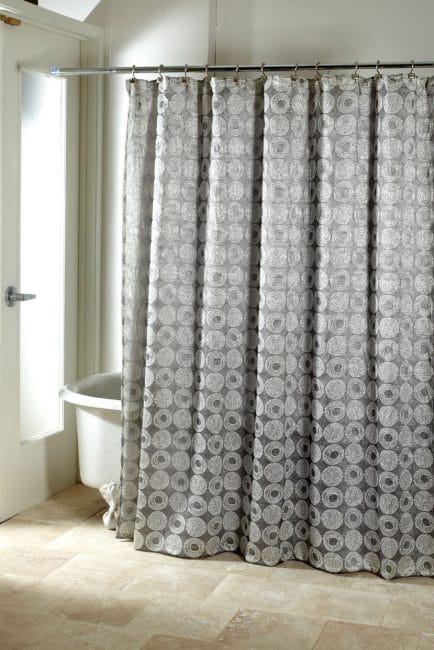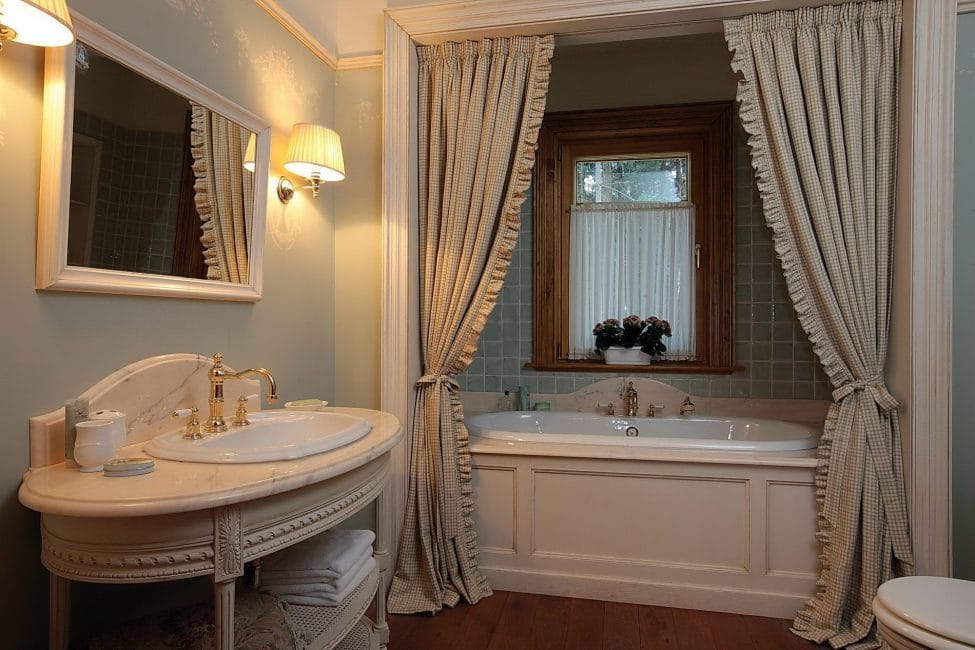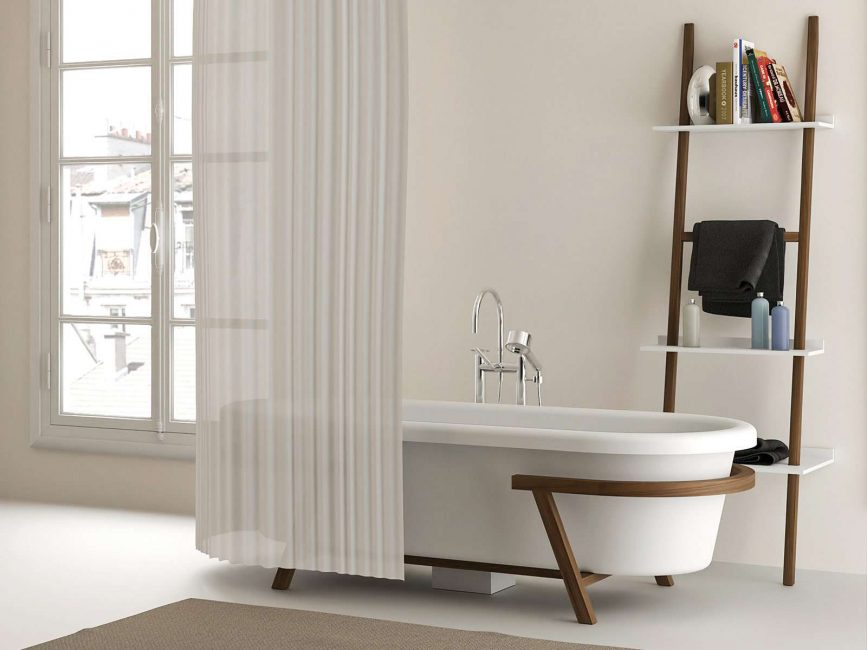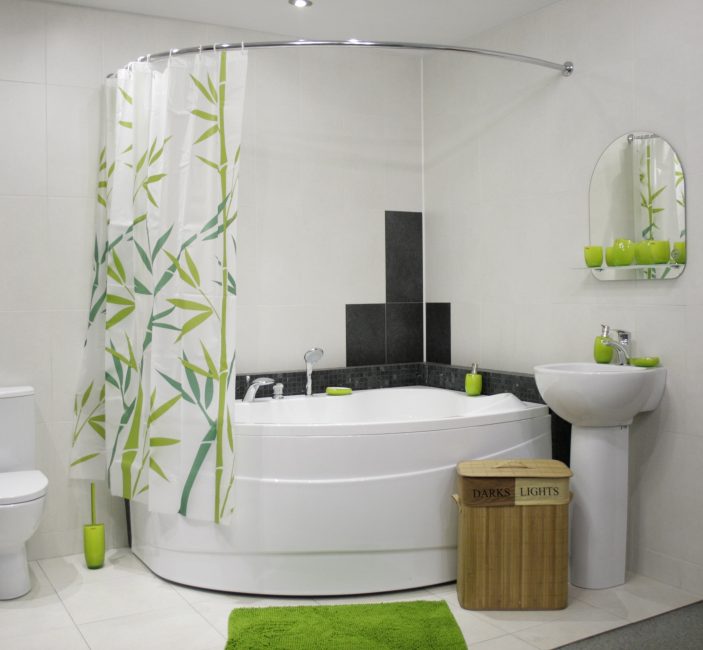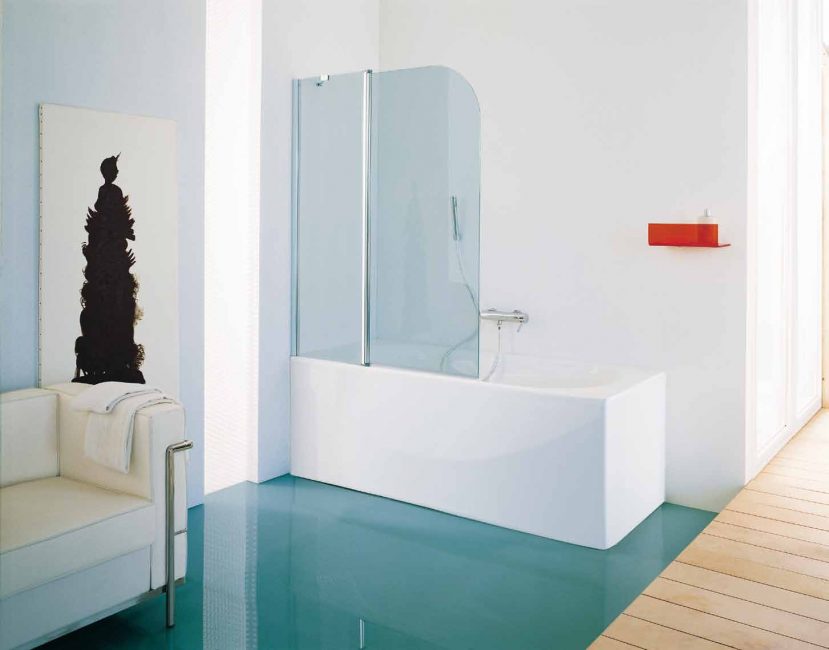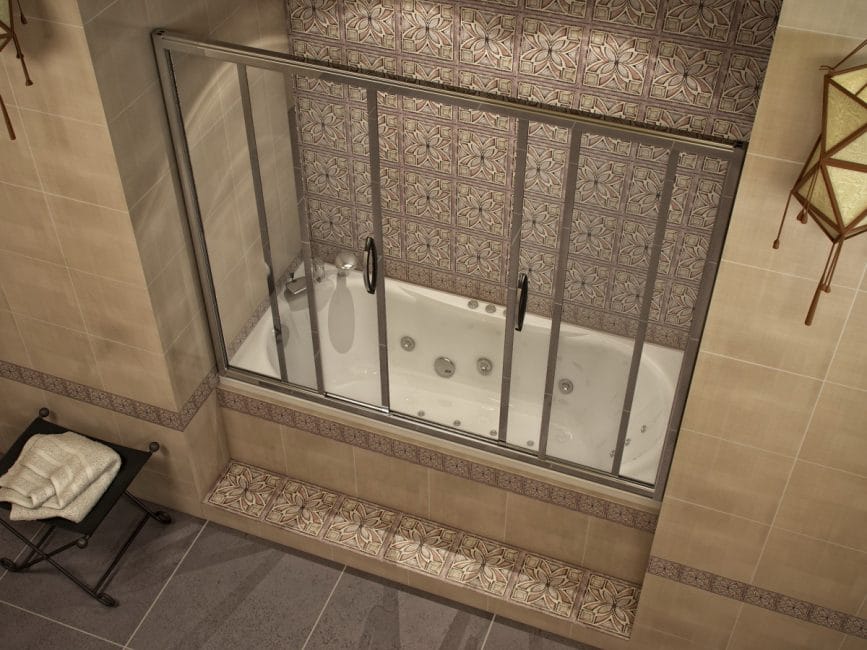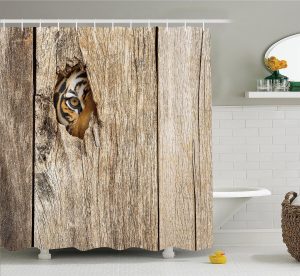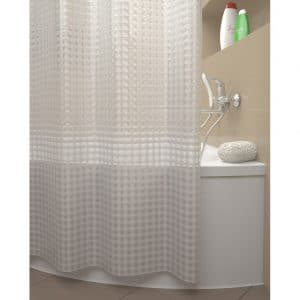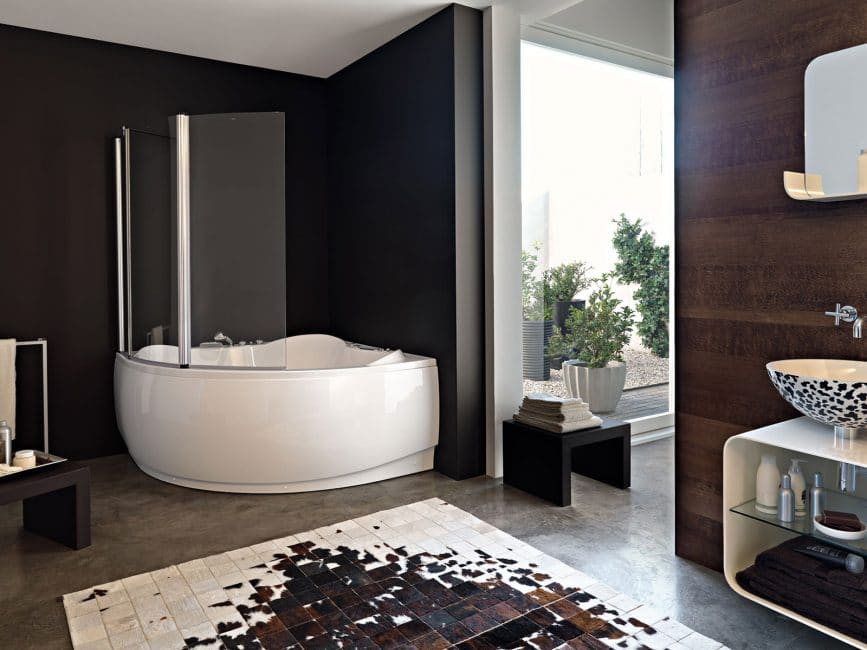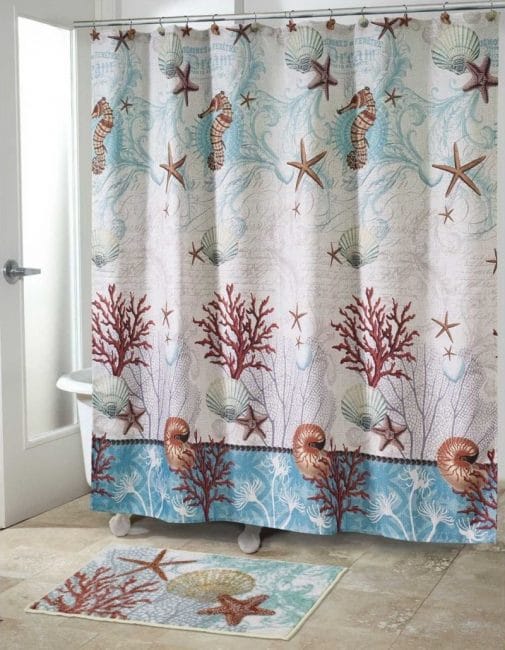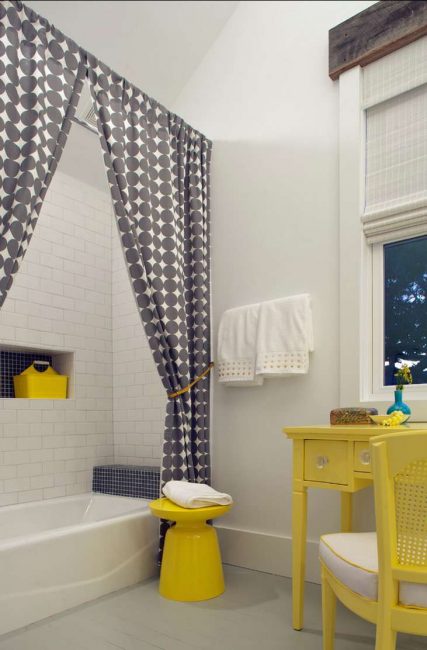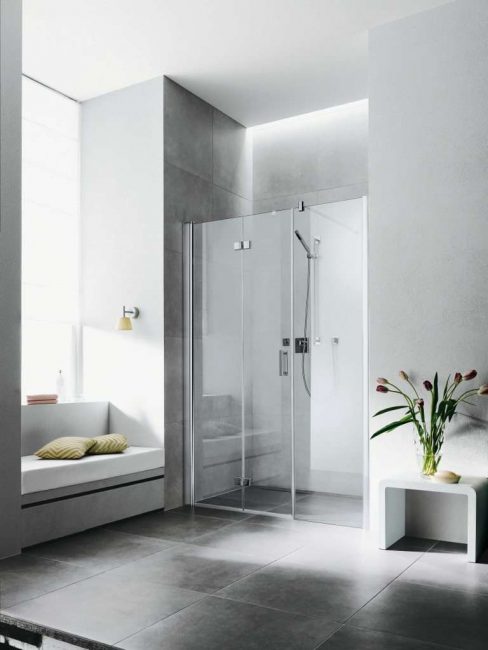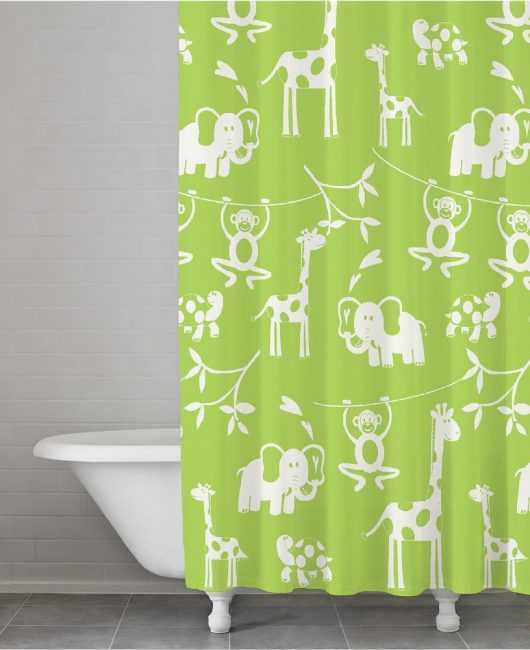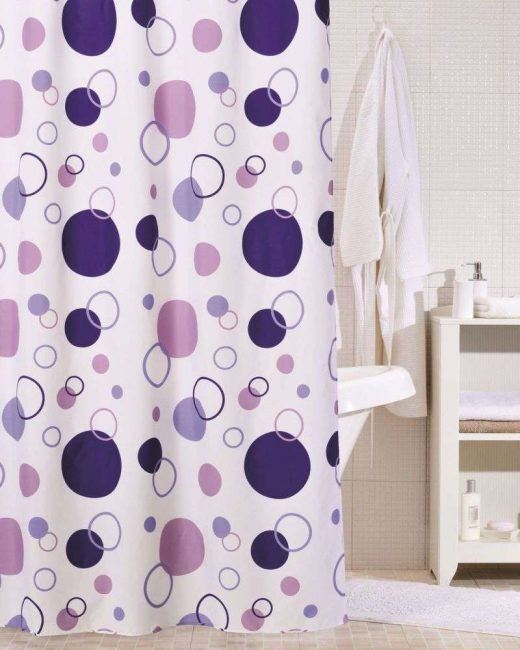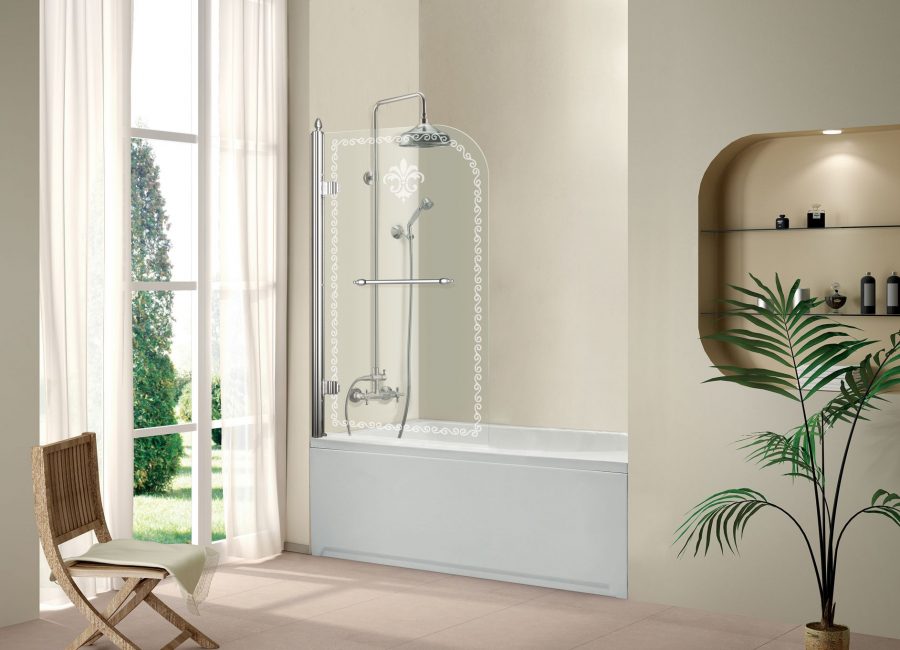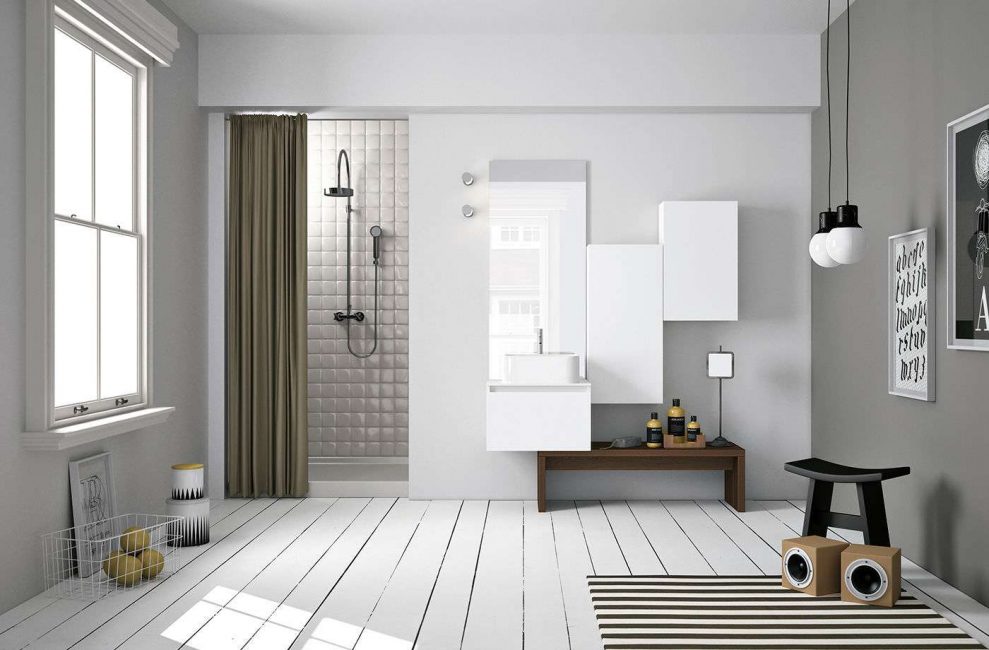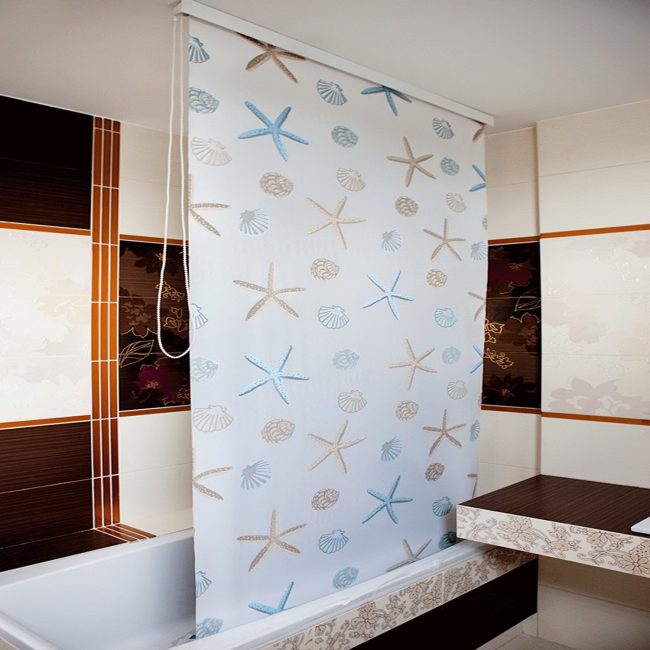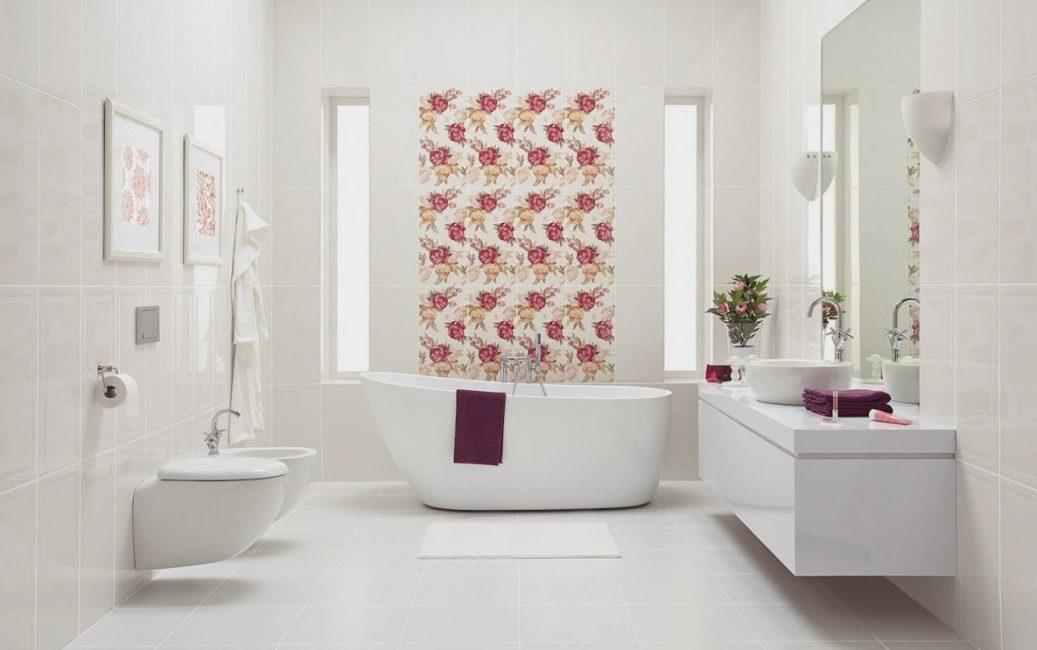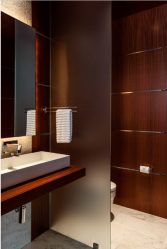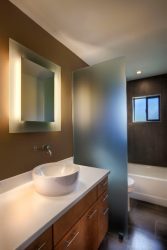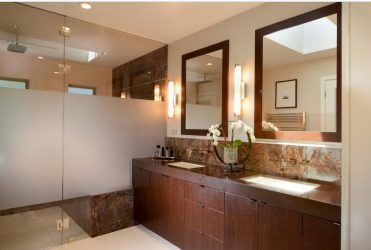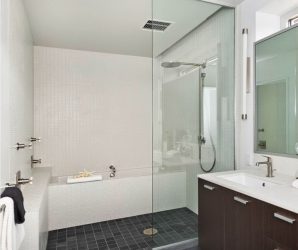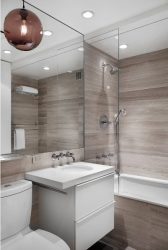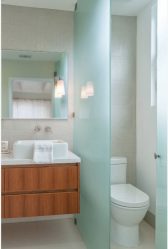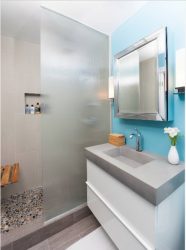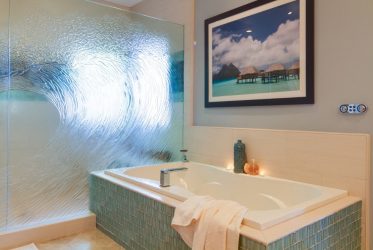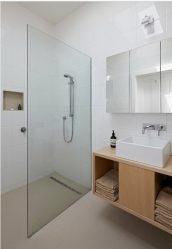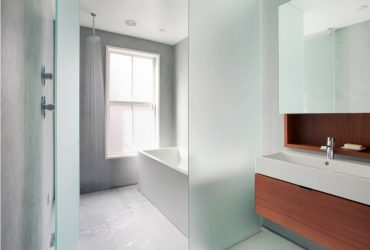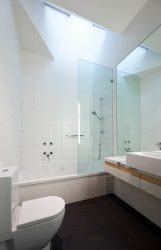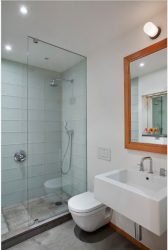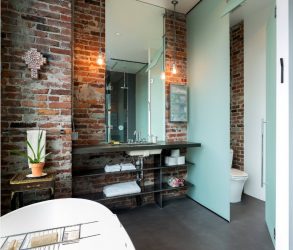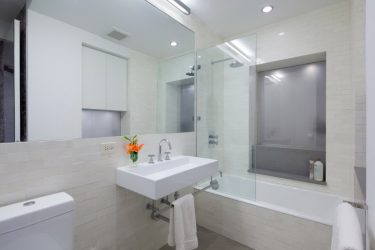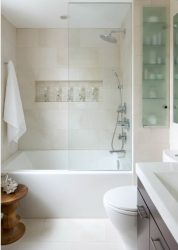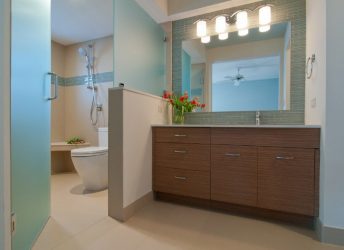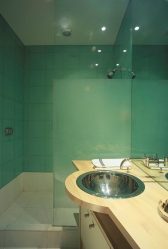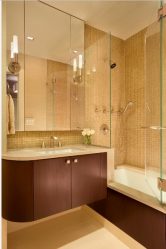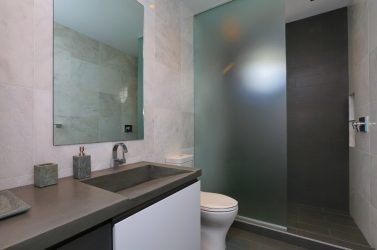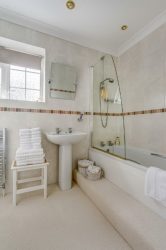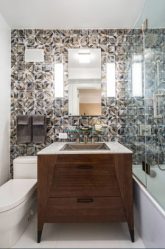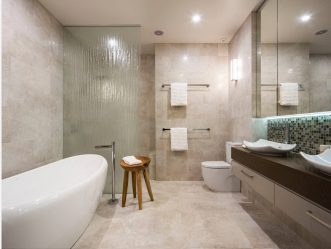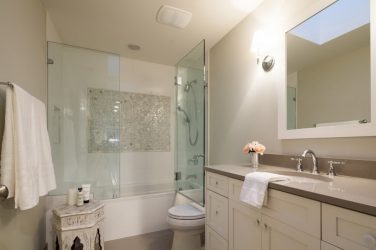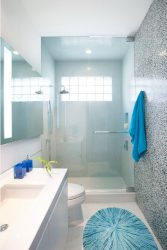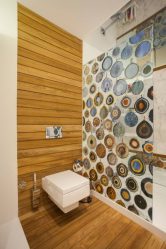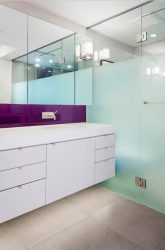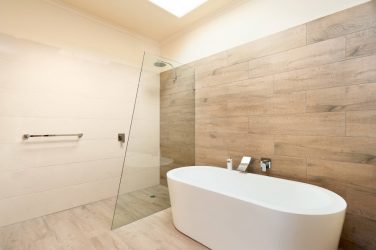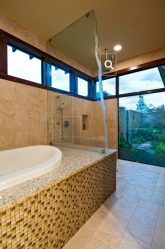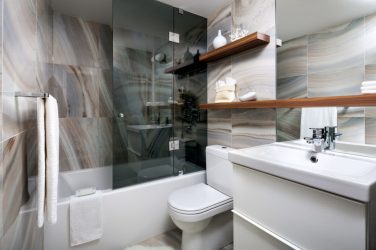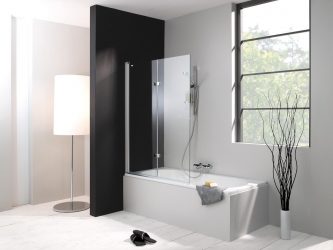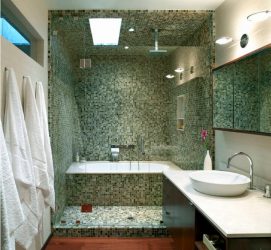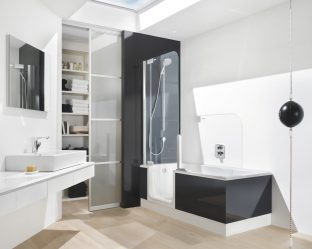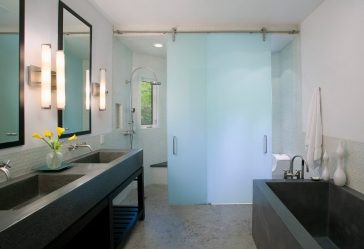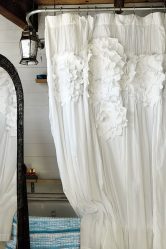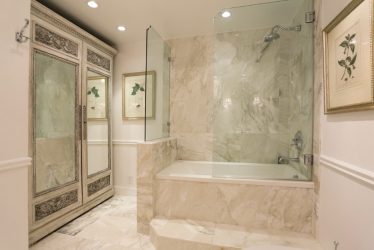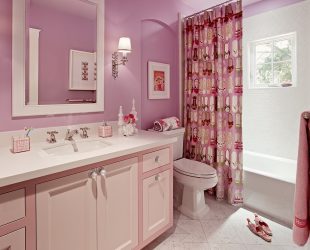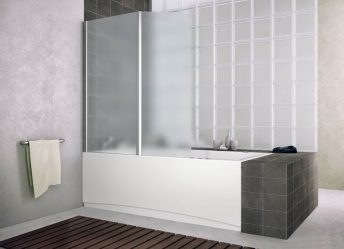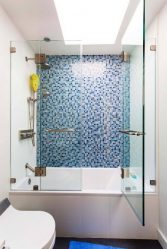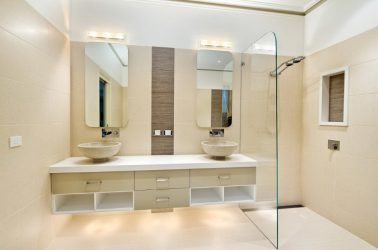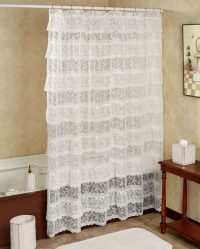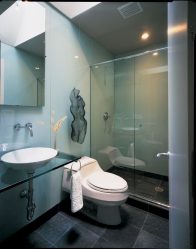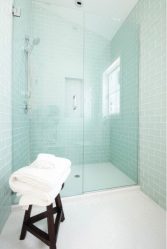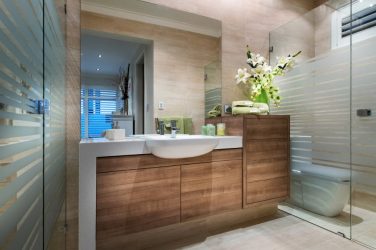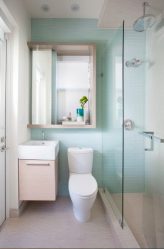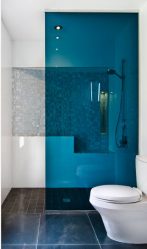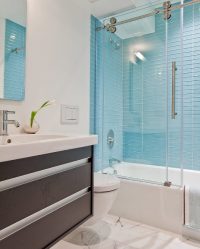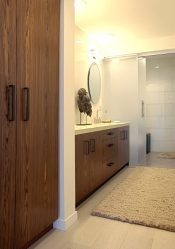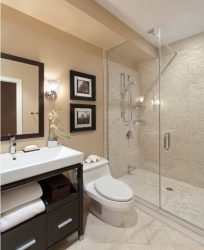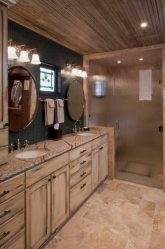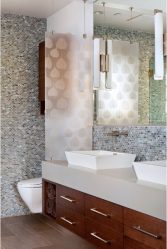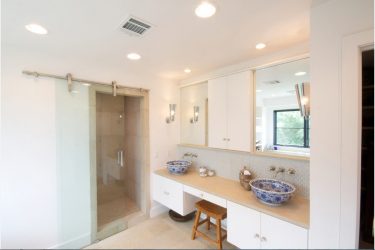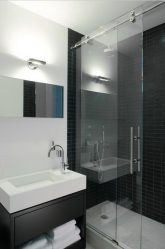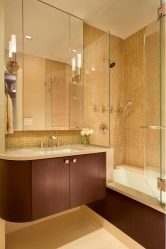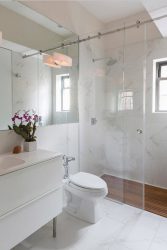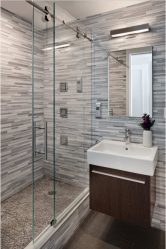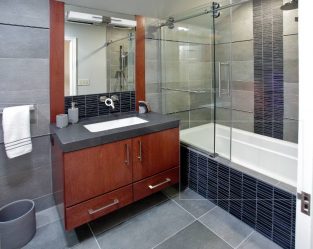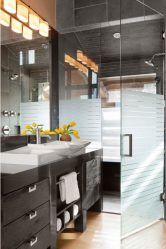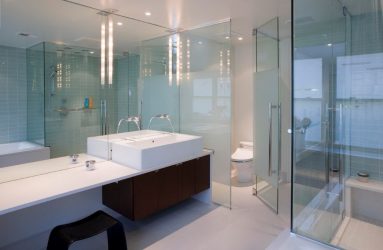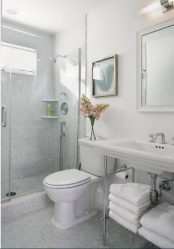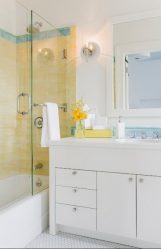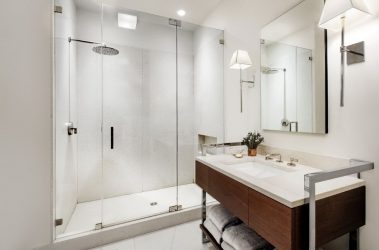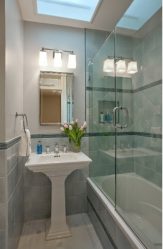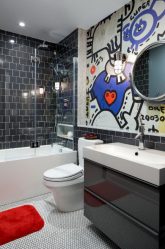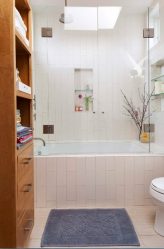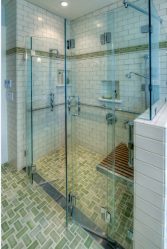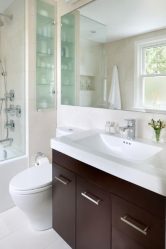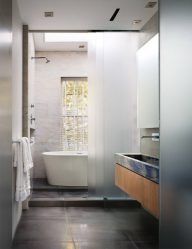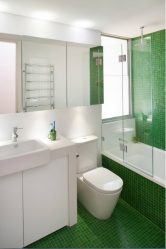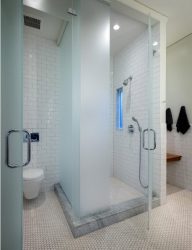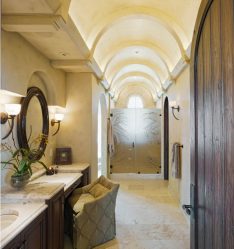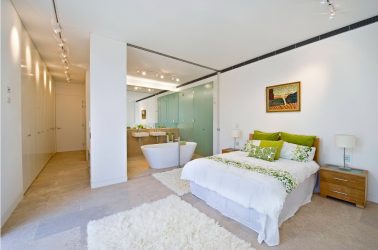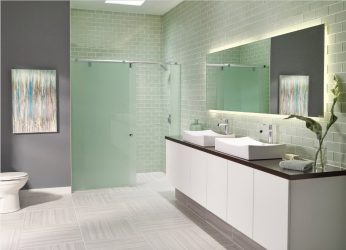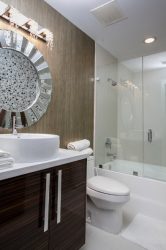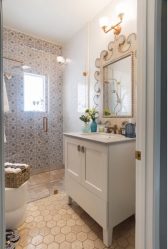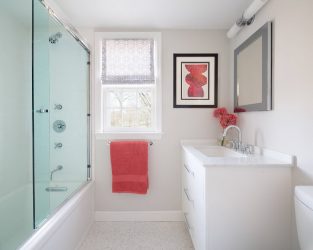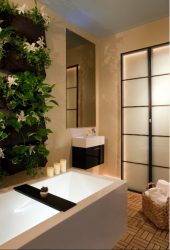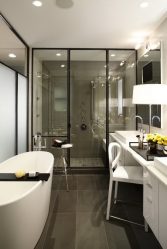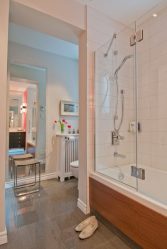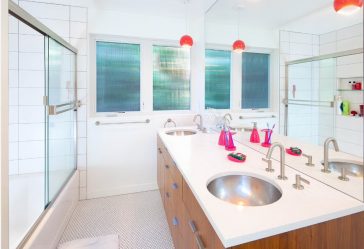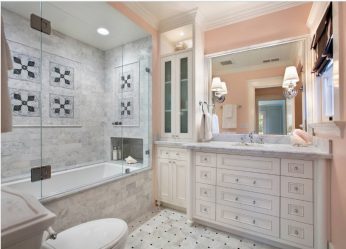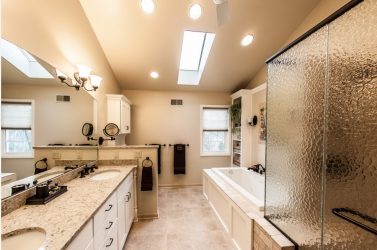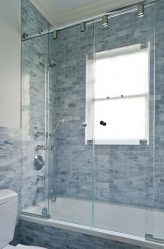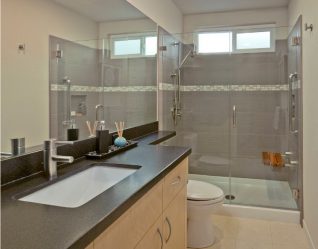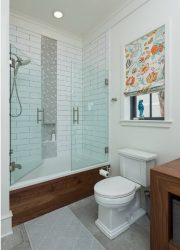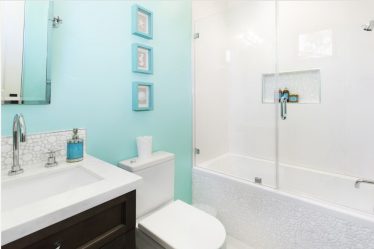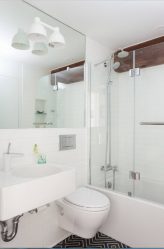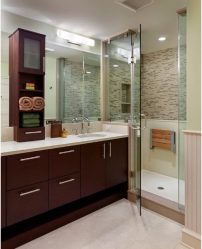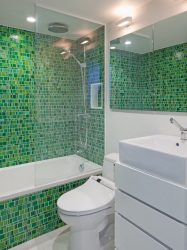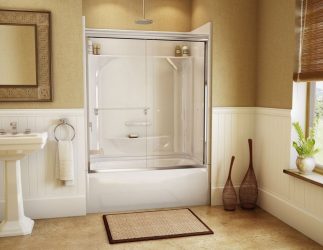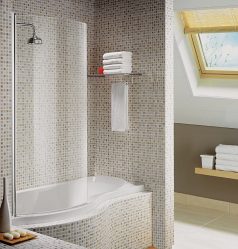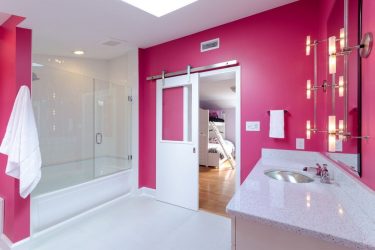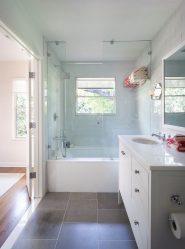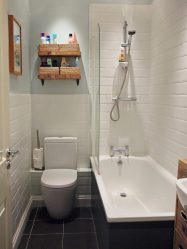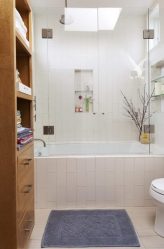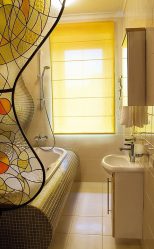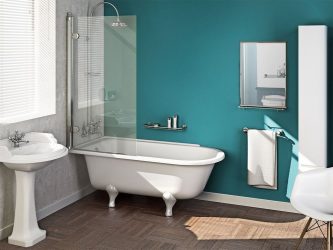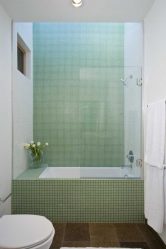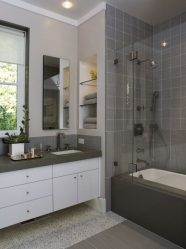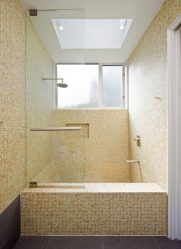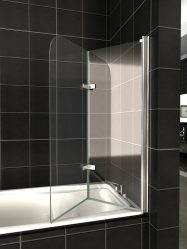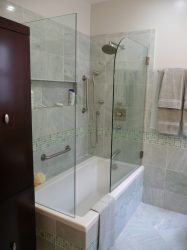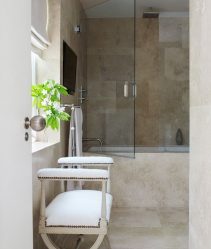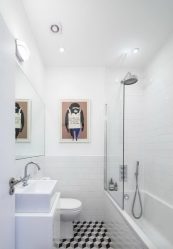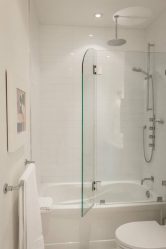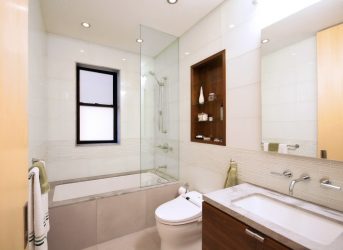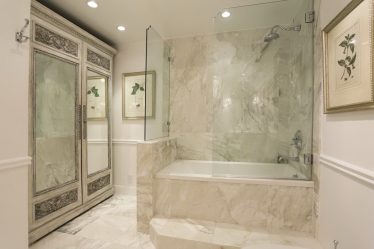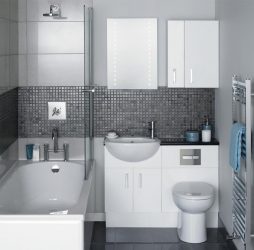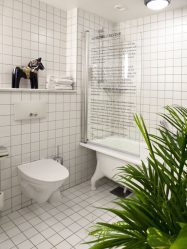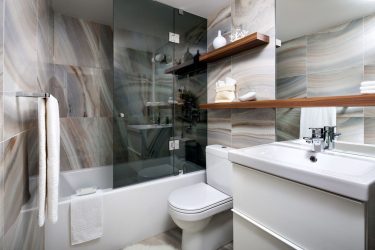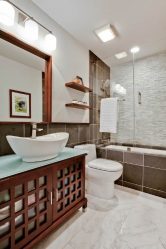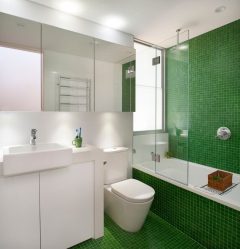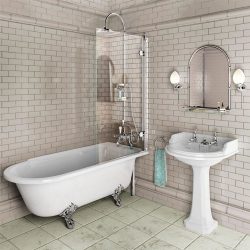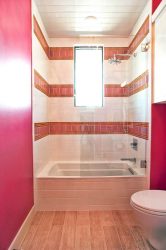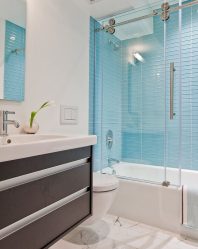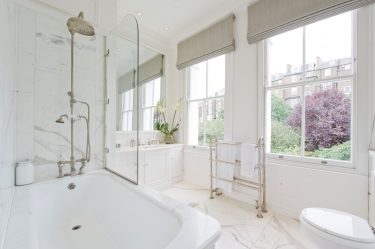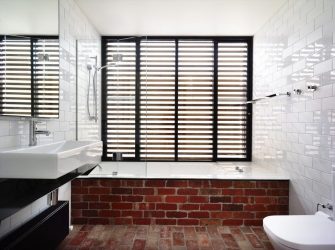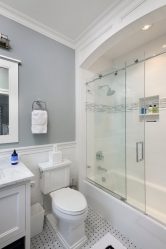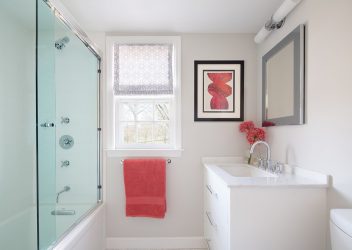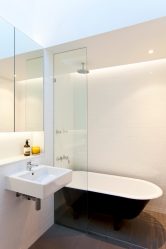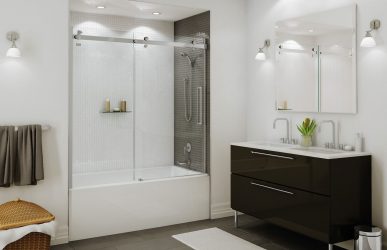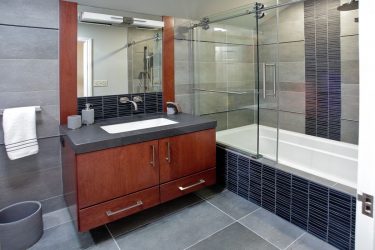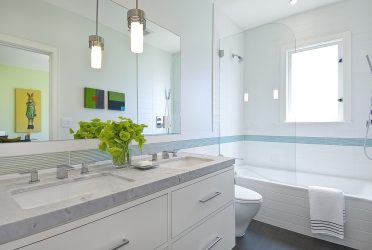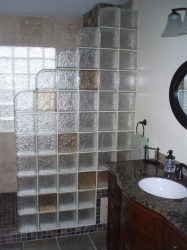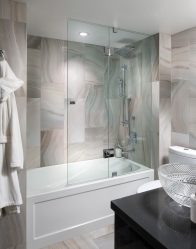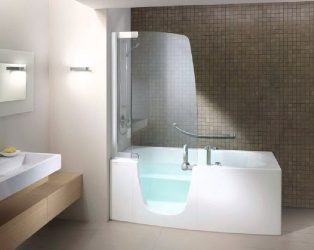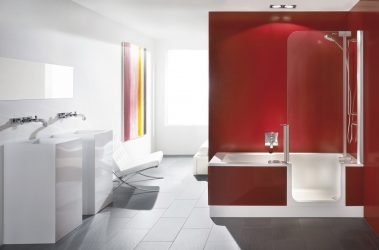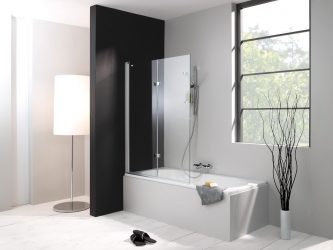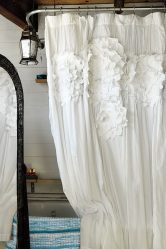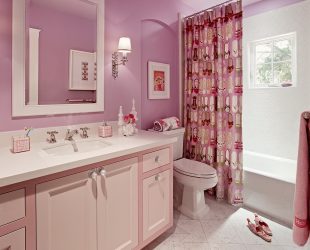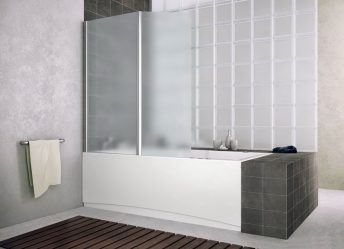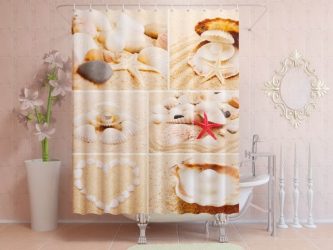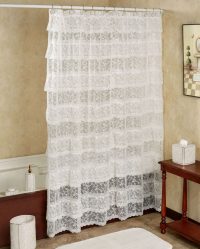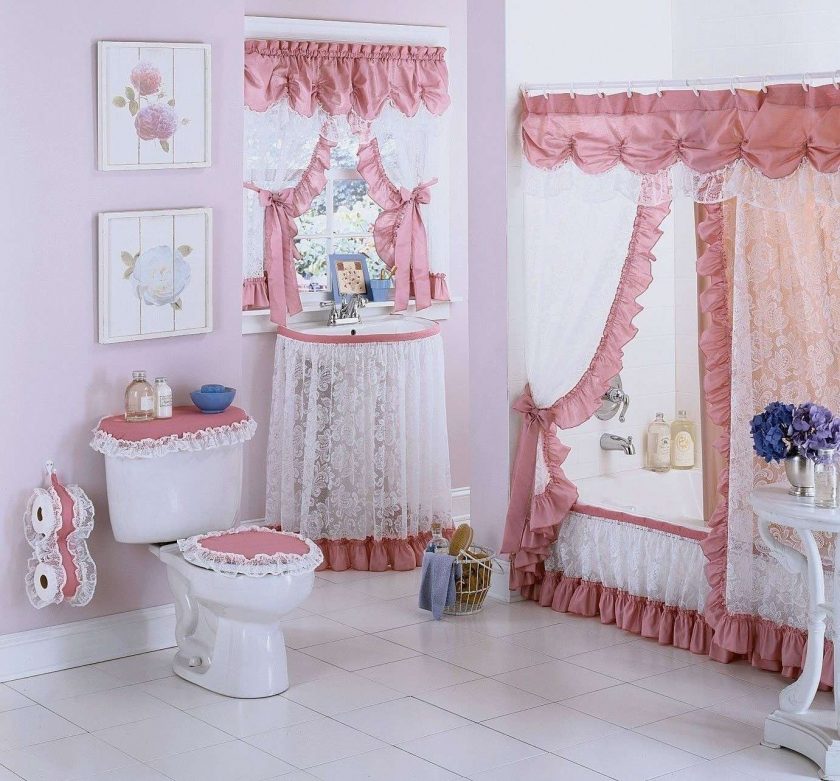
The bathroom is an oasis where you can relax after a hard day. Shutters in the bathroom - a necessary attribute, without which it can not do. They can really gracefully complement the interior, emphasize the chosen style.
Content of this article:
But you can hang polyethylene with minimal patterns, so long as the water does not drip on floor, Can i choose a curtain that will fulfill several goals at once:
- to zone the space, separating the zone in which the water procedures take place from the rest of the room, and providing a sense of security;
- prevent from falling on the floor furniture and sockets, which are sometimes found in bathrooms, water, remnants and foams;
- to complement the decor, making it more interesting, enjoyable and complete.
And in a small room with a combined bathroom, it will come in handy so that those living in flat could use it simultaneously if the need arises.
As a result, when choosing a curtain, both its appearance and its design matter.
Materials
The word “curtains” itself seems to imply that they should be made solely from soft fabric, but this is not so. Materials suitable for the bathroom, there are about a dozen and can be divided into two large groups.
return to menu ↑Soft curtains
Soft curtains for the bathroom - those that hang freely from the pipe, fixed under ceiling. Best suited for classic interiors, during the creation of which there was still no technology that would allow to make a curtain of hard plastic or glass.
The first soft material is polyethylene. It has the following advantages:
- low cost - the simplest shower curtain can be bought for a hundred rubles, if you search in stores that sell household goods;
- a wide variety - polyethylene is of any color, transparent and matte, bright and light, with patterns and monophonic;
- high water resistance - nothing happens to water from polyethylene, even if you don’t take care of it, dry it, do not follow it.
The combination of advantages gives the material that you can buy at least every week and change if you are bored with colors.
But, like all cheap things, not without its drawbacks:
- problems with care - water does not harm polyethylene, but aggressive detergents leave unpleasant traces on it;
- lack of resistance to mechanical stress - with a careless movement the polyethylene shutter can be easily torn;
- discomfort - if the polyethylene sticks to the skin while using the shower, the feeling remains very unpleasant.
In addition, not all interiors polyethylene fit well. It shows that the material is cheap, so it is better not to hang it in an elaborate stylish bathroom.
The second soft material is fabric.. Special fabrics are usually used, as a part of which there is an admixture of plastic - this is done so that the fabric does not get wet, which means it can perform a protective function. Sometimes natural flax and tulle can be used, but only if they are pre-soaked with special compounds.
The advantages are as follows:
- Beauty is a fabric, not even natural, it looks beautiful and can complement most of the classic interiors;
- variety - less than polyethylene, but still;
- long service life - with careful use can last longer than a decade.
There are also disadvantages:
- not the most pleasant sensation - polyethylene adhering to the skin leaves an unpleasant sensation, but the fabric is not much better;
- problems with care - also does not tolerate aggressive chemicals.
Fabric is a tribute to tradition rather than an adequate solution for a bathroom. It looks beautiful, it complements classic interiors well, but vinyl can handle this too.
The third soft material is vinyl, it is polyvinyl chloride, it is also PVC.. Fully synthetic, gained popularity only in recent years.
The advantages are as follows:
- resistance to mechanical damage - if polyethylene can be torn, unintentionally clinging to it, and the fabric can be torn, strongly pulling on it, then PVC will not break;
- weight - heavy material, keeps its shape, hangs down under its own weight;
- variety - due to the synthetic nature it is presented on the market in no fewer colors than polyethylene, moreover, it has a different texture;
- reliability - a vinyl curtain can last up to two decades;
- ease of care - vinyl is resistant to aggressive chemicals, so you can wash off any stains from it, and without much difficulty.
He has two minuses:
- low environmental friendliness - in nature vinyl does not decompose, it is produced in hazardous industries that pollute the environment;
- the likelihood to buy unfairly made vinyl - like most plastics, can give off evaporation that is harmful to a person if done in violation of technological standards.
The price of vinyl is relatively low, in appearance it differs little from natural fabric. Can imitate wood or stone, represent any pattern.
Solid
Of course, the word “curtains” itself is not very suitable for these constructions - the correct term would rather be a “screen”, since it is precisely the screen that they resemble the most.
The first hard material is plastic.. It is used since the first showers appeared on the market. The advantages are as follows:
- variety - can be of any texture and with any design, up to the applied photo printing with the night city;
- flexibility - it is possible to make any construction from plastic, with any complexity bends, smooth lines, hollows and protuberances;
- low cost - plastic is cheap, like most synthetic materials.
There are also disadvantages:
- lack of resistance to mechanical damage - not a very strong blow is enough to crack a piece of plastic on a plastic screen;
- the difficulty of care - from hard water and soap on the plastic stains are formed, because after bathing it will need to wipe every time;
- obvious cheapness - not every style allows the use of plastic.
The second hard material is glass. It is not at all similar to what was once used in windows and was beating from any strong blow. The current methods allow either to temper it, or to glue several sheets together, or to reinforce them. So nothing will happen on impact, or the fragments will be large and with blunt edges.
The advantages of glass are as follows:
- beauty is one of the most beautiful materials, which can be transparent or matte, color or colorless, with patterns or in the form of stained glass, with or without a pattern;
- lightness - the glass visually enlarges the room, makes it more spacious and lighter;
- strength - good quality glass is very hard to damage with an accidental blow, because not even a directed blow can harm it;
- safety - even if the glass is broken, the fragments will be large and blunt;
- ease of care - the glass is easy to clean, there is a huge amount of tools specifically for him.
There are also disadvantages:
- price - glass is more expensive than all other materials;
- relatively low flexibility - not to make such an intricate structure, like plastic, even to order, because it lends itself to worse processing;
- stains - the glass must be cleaned after each swim, if it is smooth.
Construction features
With the material figured out - on the queue design features of the curtains, which significantly affect the way it looks, as well as how reliably it will serve.
return to menu ↑Construction of solid curtains
Screens can not be hung, because their design is somewhat reminiscent of the construction of conventional interior doors. There are the following types:
Swing
Most often used for showers, because the bath will look a bit strange. It may have one sash or two sash, it looks traditional, in something elegant. But takes a place, because in a small bathroom does not take root. Also, the bottom must be necessarily taped with a special tape - if this is not done, water will fall into the gap under the doors, after which it will have to be wiped.
Sliding
It will be just fine to look in a standard bath - although it can also be used in a shower cabin if the guide rail is semi-circular. In this case, the curtain is attached to the wall, one part of it remains motionless in any case, the second one, if necessary, is extended. There are no gaps through which water could penetrate, but there is a possibility that the guide rail will break - for this, one inadvertent but precise blow is enough.
Folding
She's a "book". It looks like a curtain folded in an accordion. May have from two to five to six sections on the hinges. One of them, the extreme one, is attached to the wall, the others, if necessary, are pressed against it, and, if necessary, are laid out. If the bathroom has a non-standard shape and there are corners, such a curtain will look especially good, but for an ordinary rectangular one, it is also quite suitable.
Corner
An interesting solution that looks particularly good with semi-circular corner baths. The shutter is mounted in the corner to the two walls and is equipped with two swing doors, which, if necessary, open along the sides. It can also be used for standard rectangular baths - then mounting to the wall will be only in one place.
Partial
Can be placed on a bath of non-standard sizes. One edge to the wall, the other extends so that it covers only part of the rim. This decision is not always relevant - except in those cases where the inhabitants of the house prefer to take a bath instead of using a shower.
The main thing in the tight curtain is that from under it the water does not fall on the floor, and also that it fits well to the interior of the bathroom. The rest of the choice is limited solely by the tastes of the owner - for example, there is no fundamental difference between a folding and a sliding one.
It will be interesting to you:
Acrylic or cast-iron bathroom: Pros and cons (160+ Photos). Which is better to choose?
Bathroom tile options: 185+ (Photo) Wall options
Bathroom design in Provence style - gentle romance for body and soul (205+ Photos)
Bathroom Design with and without a Sink: Choosing furniture (165+ Photos). What is preferred?
Soft construction
Hard mounted on the wall - often they are screwed with screws. For soft ones, there is no such possibility, so a special pipe was invented for them, which is attached to the walls near the ceiling - you can screw it on, it can be glued. The pipe itself is:
- plastic - a cheap, but not very reliable solution that can collapse, breaking if you pull the curtain too hard;
- metal - most often it is hollow, light, it cannot be broken, unless it is bent, but it costs more expensive;
- wooden - rarely occurs, since the wood must be specially processed so that it can function normally in the bathroom.
The curtains can also be attached to it by different methods.
It can be:
- «Crocodiles". These are clothespins, which are mounted on the rings on the pipe, and the “teeth” hook the curtain. Thanks to them, there is no need to make holes on the canvas. But they themselves can tear it, they can leave rust marks on it, and also break down if they are pulled sharply - sometimes with a piece of cloth. For polyethylene is not suitable at all, because at the first sharp movement tear it.
- Hooks. They look elegant and light - one edge of the hook slips onto the pipe, the other clings through the hole in the fabric. They can also fly out, because the mount is rather unreliable, but they can not damage the canvas, even if sharply pulled, they just jump out of the holes.
- Grommets. It is relatively expensive, but aesthetically pleasing - rings (usually plastic, less often metal) are sewn into the fabric of the curtains, after which they are strung on a pipe. They differ from other solutions by the ability to create beautiful smooth folds that will go to bed by themselves. They are suitable for most classic styles, but polyethylene with eyelets does not exist - it is too thin material, it is impossible to embed rings in it normally.
- Magnets. The original solution, in which the shutter is fastened with bilateral magnets, between which its canvas is clamped. Usually they are decorated with decorative elements, thanks to which the result looks interesting. Great for polyethylene and lightweight fabrics, but heavy fabrics may not hold. Can not tear the curtain.
- «Pocket". It does not occur in polyethylene, but often in cloth and vinyl. The top edge is turned up, sewn up, and then a pipe is passed through the formed “pocket”. It is beautiful, because the cornice is hidden, securely, because the structure can only be torn down with it, simply by execution. The only drawback is that it can be difficult to move the fabric along a damped canvas.. But this is quite possible to cope.
Any composite structures are rattling - the crocodiles are stronger, the grommets are weaker, but still.
The only completely silent construction is a “pocket”, it only rustles a little.
There are also rarely used roller blinds - this is the original solution, in which the curtain comes down from the ceiling, unwinding in the process.
return to menu ↑The combination with the interior
In order for the curtain in the bathroom to look good, it must not only combine the material with the design. She herself should fit well in the interior. For this you need to take into account the style:
- Provence and the rest of the romantic styles. Made in bright colors, the interior, light walls and ceiling require lightness, lightness, which can be provided only with a translucent fabric. It is desirable that it be a light shade, you can with a floral pattern that will overlap with other patterned elements, if any. Polyethylene is impossible, it will instantly destroy everything. Hard curtains are also not too fit the overall concept.
- Minimalism and other simple styles that require maximum utility of all elements. They look good in them hard sliding curtains - simple, transparent or slightly darkened, without ornament, without a pattern. The less they take up space, the less they attract attention - the better.
- Eco and other emphasized natural styles. No synthetic materials such as vinyl or polyethylene. Exclusively fabric, and it is desirable light shades green, yellow, brown - and be sure to be warm. The original solution will be a tough glass curtain. She will play on the contrast, but not on the contrast of color, but on the contrast of styles. The severity of the glass will only emphasize the cozy naturalness of the rest.
- Classic with a pompous note - for example, amp or gothic. This is well suited for heavy fabric, similar to natural, which can be laid with beautiful folds and, as an accent, to intercept them with gilded or bronze cord. Obviously synthetic materials do not fit, as well as hard blinds.
You also need to take into account purely household trifles that may affect usability:
- The length of the soft curtain should be no less than ten centimeters longer than the edge of the bath, otherwise the water will constantly pour over the floor.
- The width of the soft curtain should be no less than twenty centimeters wider than the edge of the bath. Otherwise, the water will again be poured over it, or it will have to be specially pulled and monitored whenever you want to take a shower.
- The edges of the soft curtain should be equipped with special bulges. From above, so that it does not tear when you try to insert hooks into it, and from below, so that it has at least some weight that does not allow it to hang loose.
- Solid curtain should be clearly the size of the bath. If it is longer or wider, this is a serious drawback, because of which it will either not be able to close normally, or water will be constantly spilled through it.
- After each use, any curtain should be allowed to dry, for which purpose it should be left open or flattened and water should be drained from it. Only after that it can be closed and removed, otherwise the ugly mold that is harmful to human health can grow on it.
- From time to time soft curtains need to be washed - preferably manually. Fabric at a temperature not higher than thirty degrees, vinyl at a temperature not higher than forty. At the same time, care must be taken not to twist the fabric too much during the spin cycle. Otherwise, it may not crack down.
Proper care will extend the life of the curtain for many years - for example, vinyl can last longer than a dozen years.
The curtain should be selected according to taste, according to its budget and interior features.
VIDEO: How to choose the right curtain for the bathroom?
Shutter for bathroom
How to choose?
